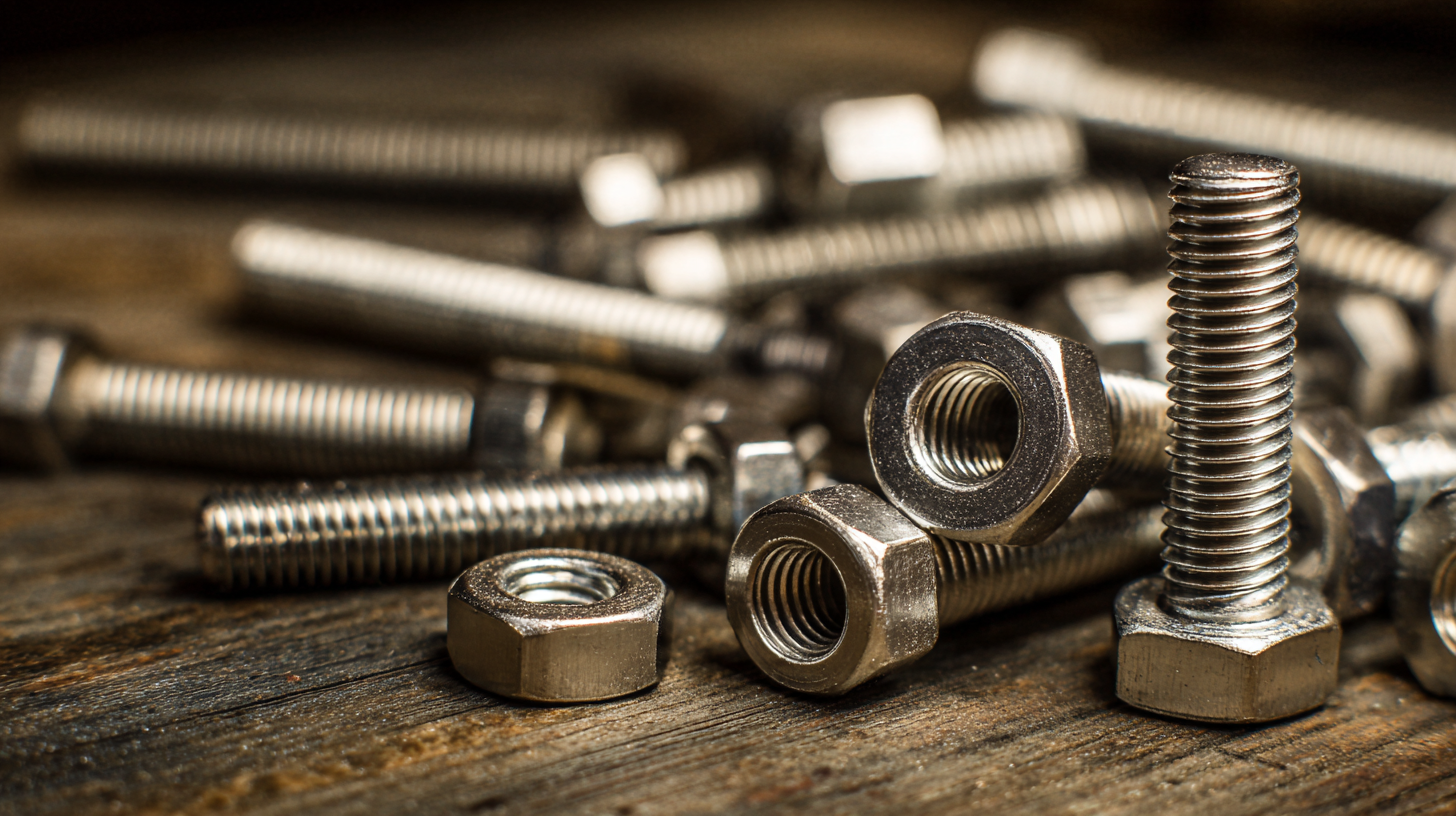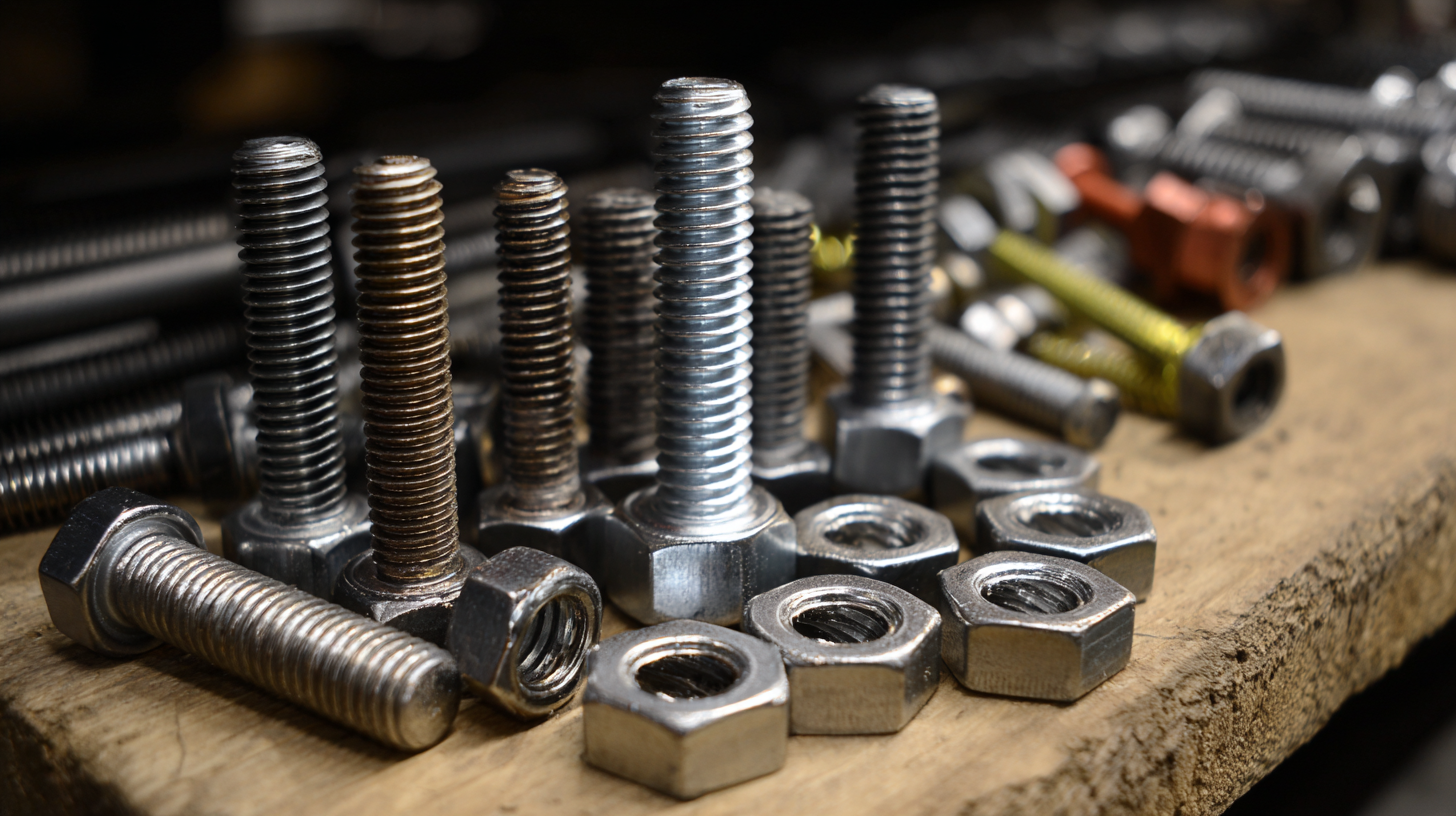How to Choose the Right Stainless Bolts for Your Project Needs
When embarking on a construction or engineering project, selecting the appropriate materials is crucial for ensuring durability and reliability. Among the various options available, stainless bolts stand out due to their exceptional strength and resistance to corrosion. However, choosing the right stainless bolts for your specific project needs can be a daunting task, given the multitude of types, sizes, and finishes available on the market.

Factors such as the environment in which the bolts will be used, the load requirements, and compatibility with other materials must all be considered. This article will guide you through the essential considerations and criteria to help you make an informed decision in selecting stainless bolts that will best suit the demands of your project, ensuring not only structural integrity but also long-term performance.
Understanding the Different Types of Stainless Steel Bolts Available
When selecting stainless steel bolts for your project, it's essential to understand the different types available, as each serves specific applications and environments. The most common varieties include austenitic, ferritic, and martensitic stainless steel bolts. Austenitic bolts, such as 304 and 316 stainless steel, are known for their excellent corrosion resistance and are suitable for chemical and marine applications. In contrast, ferritic bolts provide moderate corrosion resistance and are often used in automotive fittings and manufacturing. Martensitic bolts, on the other hand, offer high strength and hardness, making them ideal for applications where toughness is critical.
Tips: Always consider the environment in which the bolts will be used. For outdoor projects or areas prone to rust and corrosion, opt for austenitic stainless steel bolts, especially those with a higher nickel content, such as 316. Additionally, ensure the thread type matches your materials for optimal assembly.
Another critical aspect is the size and grade of the bolts. Choosing the right diameter and length is vital for load-bearing capacity and structural integrity. Use grade markings to determine the strength; for instance, 18-8 bolts are a type of austenitic stainless steel indicating good performance under stress. Always refer to detailed specifications to prevent mismatches that could compromise your project’s safety and longevity.
How to Choose the Right Stainless Bolts for Your Project Needs
| Bolt Type | Material Grade | Corrosion Resistance | Typical Applications |
|---|---|---|---|
| Hex Bolt | A2 (304) | Good | General construction, automotive |
| Carriage Bolt | A4 (316) | Excellent | Marine applications, outdoor structures |
| Lag Bolt | A2 (304) | Good | Wooden structures, furniture |
| Socket Cap Screw | A4 (316) | Excellent | Precision machinery, high-stress applications |
Key Factors to Consider When Choosing Stainless Steel Bolts
When selecting stainless steel bolts for your project, it's essential to consider key factors that can affect both performance and longevity. The grade of stainless steel is crucial; for instance, A2 (304) stainless steel offers good resistance to corrosion in mild environments, while A4 (316) is better suited for more aggressive conditions, such as marine applications or areas exposed to chlorides. Industry reports indicate that using the correct stainless steel grade can extend the lifespan of hardware by up to 50%, particularly in corrosive environments.
Another important consideration is the bolt size and thread pitch. A study by the Fastener Technology International noted that incorrect sizing can lead to inadequate preload and stress on the bolt, potentially leading to failure. It is also important to consider the tensile strength of the bolt, which can be determined by understanding the specifications provided by standards organizations such as ASTM or ISO. This can prevent costly replacements and ensure the integrity of your project.
**Tips:** Ensure to verify the environmental conditions your bolts will face and select the appropriate grade accordingly. Always refer to the latest specifications for thread sizes and tensile strengths to align your project with industry best practices. Additionally, consider utilizing a mix of coatings that can further enhance corrosion resistance for custom applications.
Stainless Steel Bolts Selection Factors
Assessing Environmental Conditions for Optimal Bolt Selection
When selecting stainless bolts for a project, understanding the environmental conditions plays a crucial role in optimizing performance and longevity. Environmental factors such as temperature, humidity, and exposure to corrosive elements can significantly affect the integrity of fasteners. Recent studies, such as the investigation into the durability of anchor bolts in loess slopes under various hydro-thermal conditions, highlight the need to monitor these factors closely. This research tracked the temperature and humidity while assessing stress at various depths, underscoring that selecting bolts by considering environmental influences is essential for their reliability.
Furthermore, a framework integrating the Analytic Hierarchy Process (AHP) and VIKOR methods can facilitate the choice of materials for specific applications, particularly in high-corrosion environments like wind turbines. Such methodologies evaluate materials against multiple criteria, including corrosion resistance and efficiency, ensuring that the selected bolts can withstand harsh conditions without compromising structural integrity. By leveraging advanced analytical approaches, projects can align bolt selection with environmental specifics, enhancing durability while minimizing the risk of failure.
Evaluating Load Requirements for Your Specific Project
When selecting stainless bolts for your project, evaluating the load requirements is crucial to ensure safety and functionality. Understanding the specific forces at play, including shear, tensile, and compressive loads, will guide you in choosing the right bolt specifications. For instance, if your project involves a structure that will bear significant weight or withstand dynamic forces, selecting bolts with higher tensile strength and fatigue resistance is essential.

Additionally, it's important to consider environmental factors such as exposure to moisture or corrosive substances when assessing load requirements. Different grades of stainless steel, such as 304 or 316, offer varying levels of corrosion resistance and strength, which can impact performance under load. By thoroughly evaluating the load conditions and environmental factors, you can make informed decisions that enhance the longevity and reliability of your project while ensuring safety standards are met.
Best Practices for Sourcing and Purchasing Stainless Steel Bolts
When sourcing stainless steel bolts for your project, it is essential to consider several best practices to ensure you make informed decisions. Start by identifying the specific requirements of your project, including the environment in which the bolts will be used. For instance, marine or humid environments necessitate higher corrosion resistance, prompting you to opt for bolts made from 316 stainless steel over 304. Understanding the different grades of stainless steel is the first step in sourcing the right materials.

Next, choose reputable suppliers who can provide detailed specifications and certifications for their stainless steel products. Always request samples to inspect the quality and finish before making a bulk purchase. Moreover, consider the supplier's customer service and support options—having access to knowledgeable assistance can save time and prevent costly mistakes. Lastly, don’t overlook the importance of competitive pricing; however, prioritize quality over cost to ensure the longevity and reliability of your installation.
Related Posts
-

7 Best Tips for Choosing the Right Stainless Bolt for Your Project
-

7 Tips for Choosing the Right Button Head Bolt for Your Project
-

The Ultimate Guide to Choosing the Right Furniture Screw for Your Projects
-

Ultimate Guide to Choosing the Right Button Head Bolt for Your Project
-

Understanding the Importance of Torx Screws in Modern Engineering
-

How to Choose the Right Truss Head Carriage Bolt for Your Project
